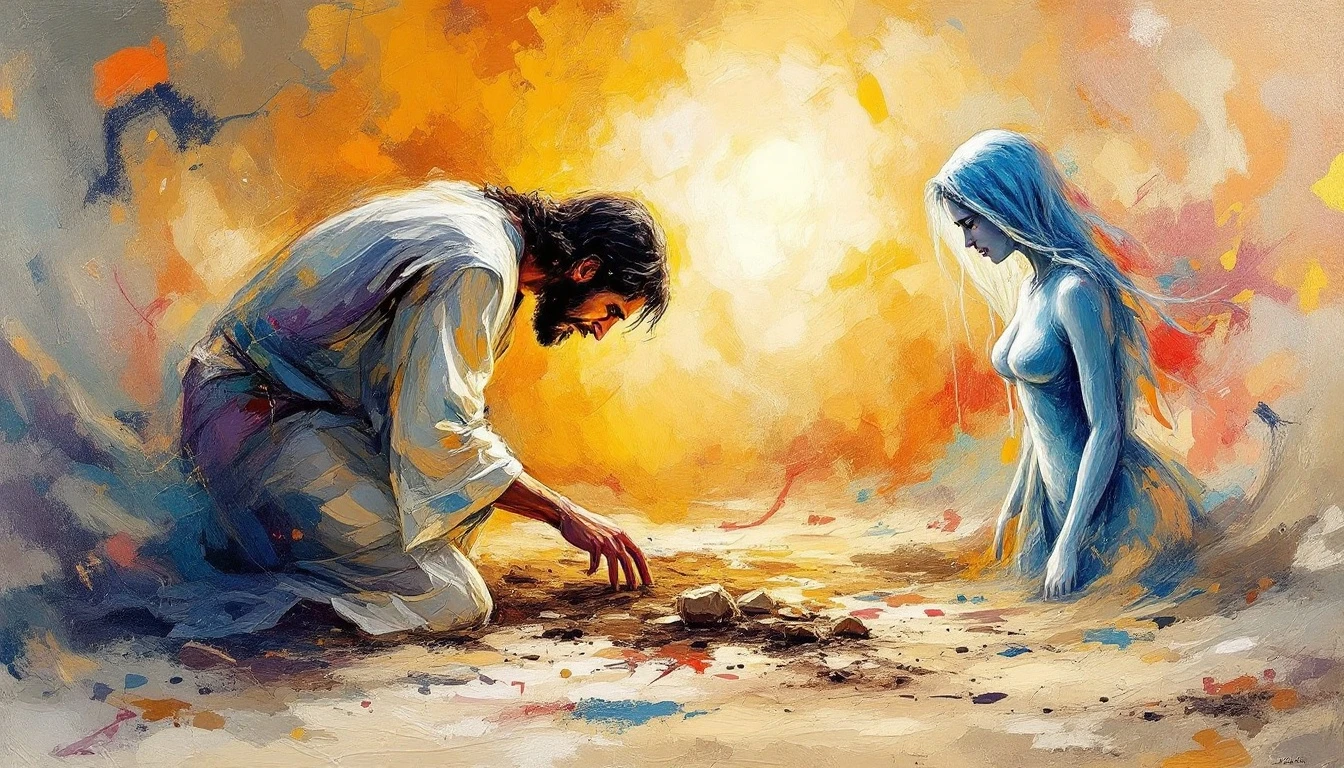### Canvas Abstract Oil Painting Description **Title**: *He Who Is Without Sin* This powerful abstract oil painting captures a moment of profound emotional and spiritual intensity, depicting the biblical scene where Jesus confronts a crowd eager to cast stones at a woman accused of wrongdoing. The canvas bursts with dynamic color and movement, inviting the viewer into the emotional turmoil of the moment. At the center, Jesus is portrayed bending down, his form rendered in soft, flowing lines that convey humility and compassion. His fingers delicately trace the dirt below him, hinting at the profound words he is about to proclaim. Surrounding him, swirling shades of earth tones represent the sandy ground—an abstract interpretation of the backdrop that emphasizes both simplicity and depth. The woman stands nearby, her figure a blend of sorrowful blues and muted earth tones, emphasizing her despair and sense of repentance. Her head is bowed, a cascade of tears rendered in translucent whites and soft grays, symbolizing her inner turmoil and plea for mercy. The abstract representation of her body captures both her fragility and the weight of her circumstances. In stark contrast, the crowd is depicted in jagged strokes and angular forms, their figures more aggressive and dynamic, suggesting heightened emotions. Hands are raised, tightly gripping stones—represented by dark, heavy shapes that loom ominously. The use of contrasting colors, such as fiery reds and aggressive blacks, captures their anger and judgment, creating a palpable tension in the atmosphere. The phrase "He who is without sin, cast the first stone" is subtly integrated into the painting, perhaps woven into the dirt itself or suggested in the patterns of the surrounding crowd, allowing the viewer to engage with the message without it being overtly spelled out. Overall, the painting balances a sense of chaos and calm—a visual representation of judgment and mercy, anger and compassion. The abstract elements, characterized by bold brushwork and layered textures, invite contemplation, challenging the observer to reflect on their own sins and the power of forgiveness. This scene serves as a poignant reminder of humanity's complexities and the grace that transcends judgment, evoking deep emotions and spiritual reflection


